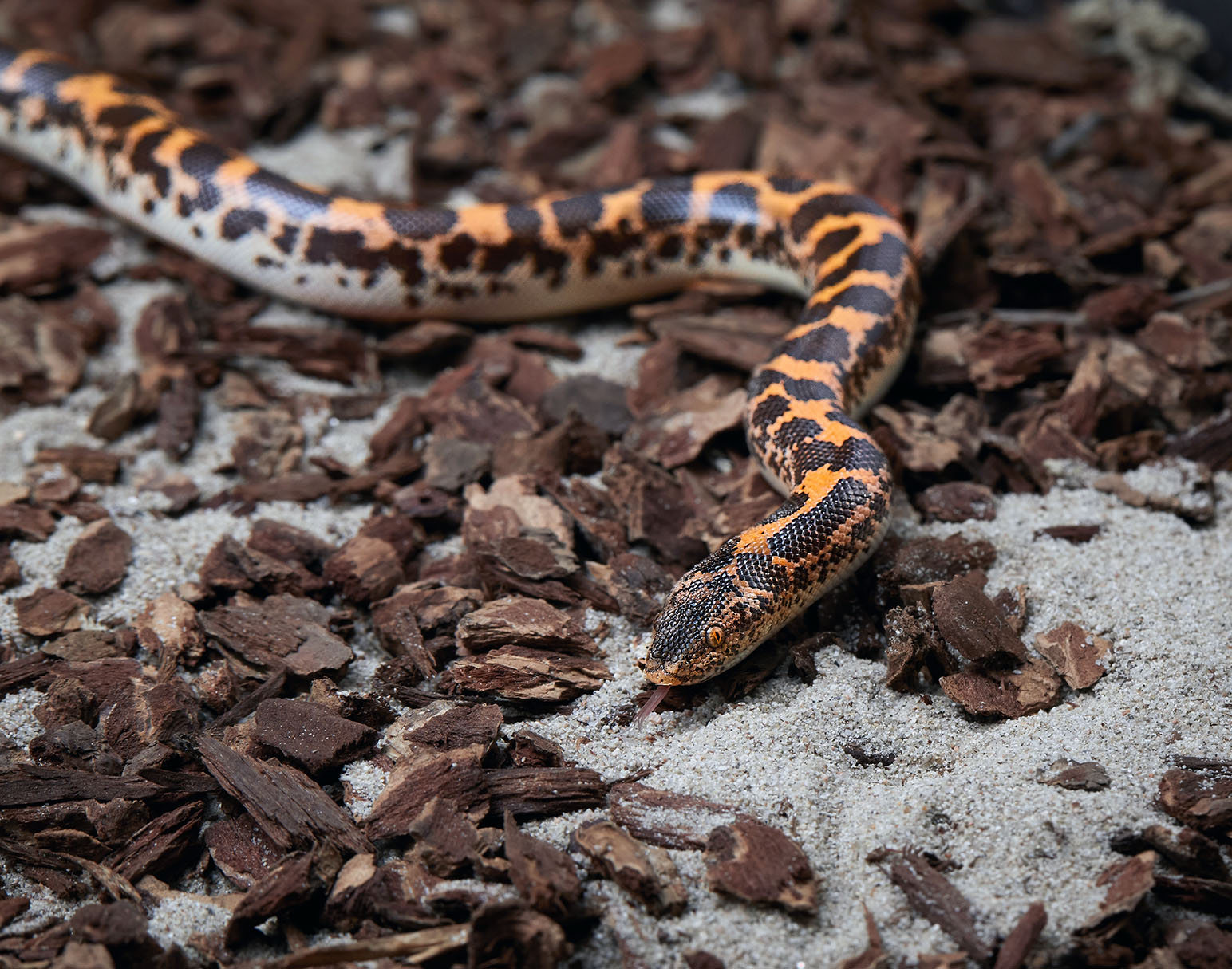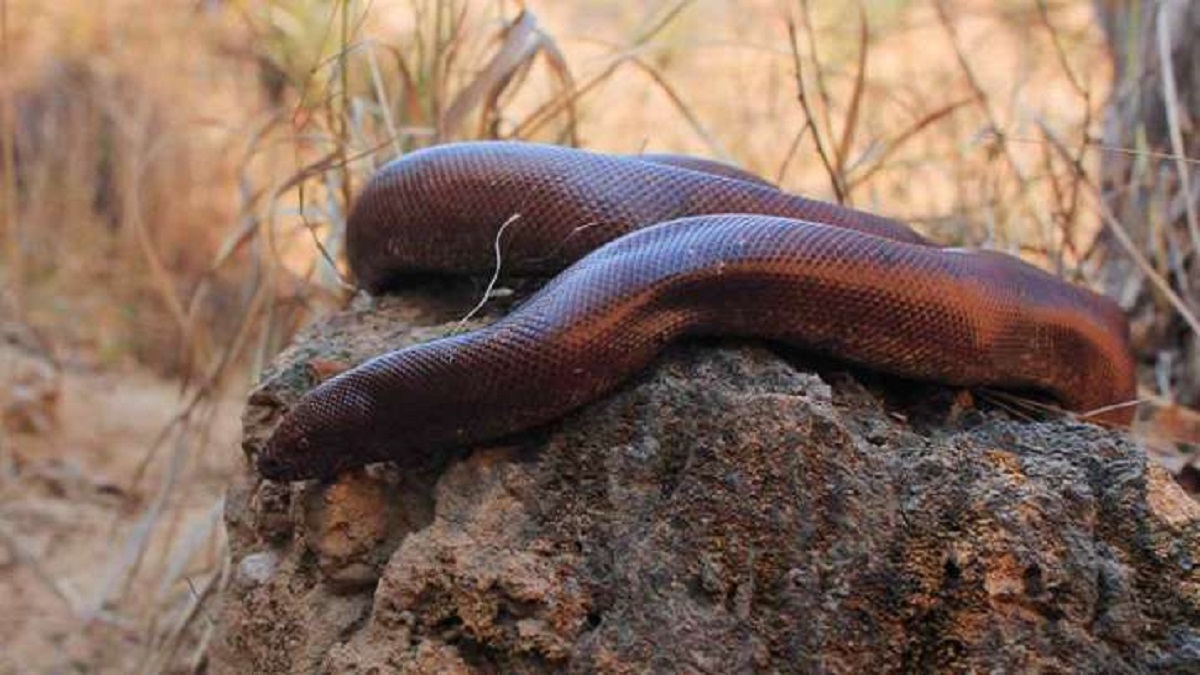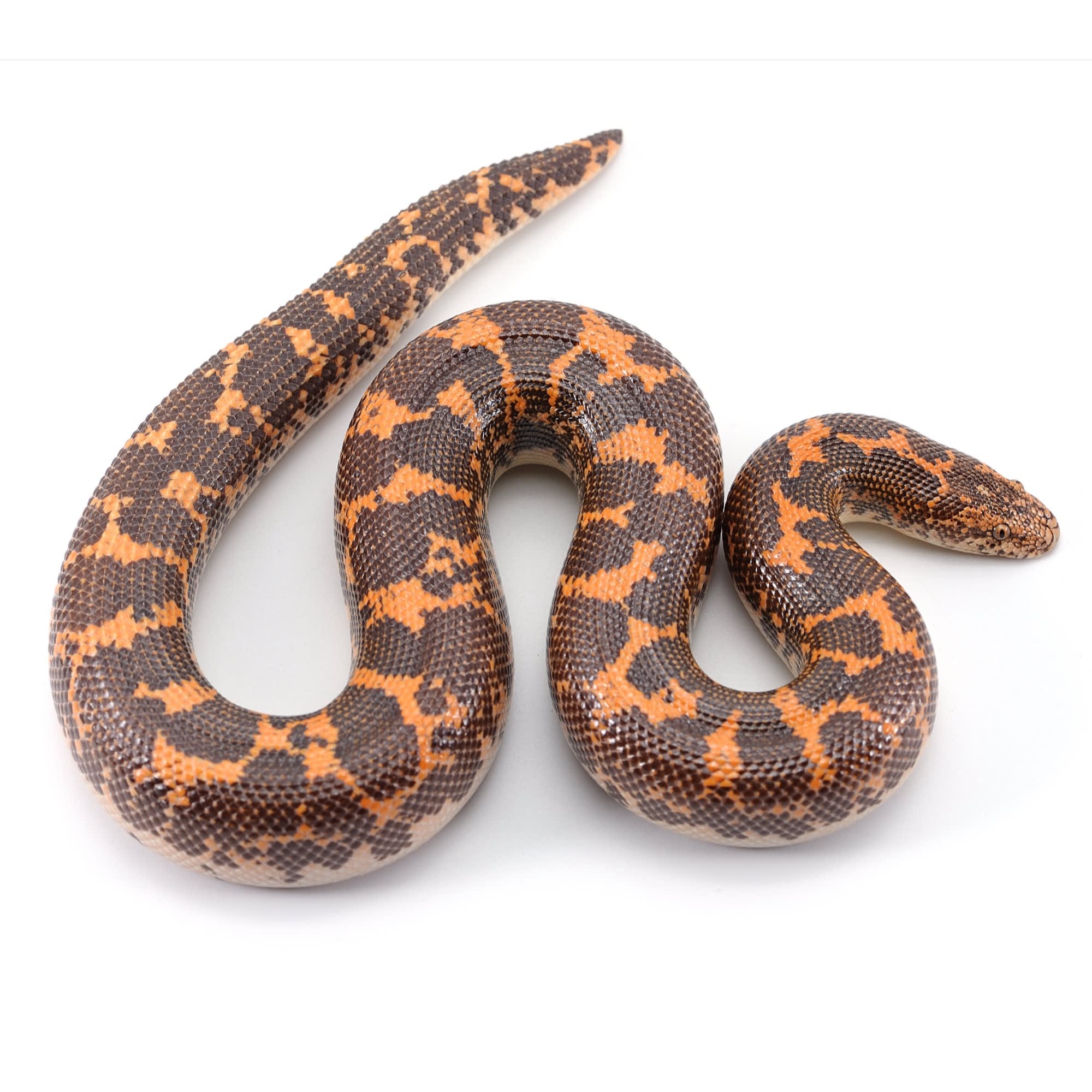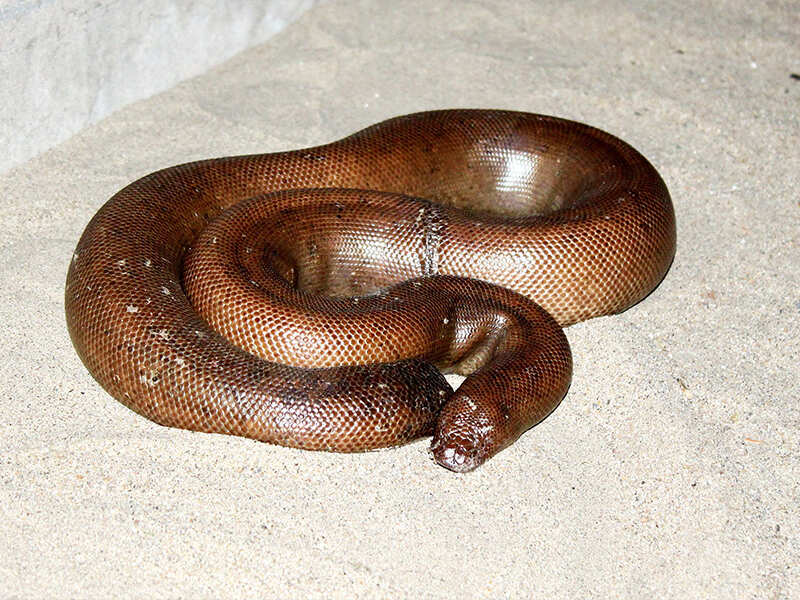
Featured Animals Kenyan Sand Boa CMZoo
Erycinae is a subfamily of stout-bodied snakes, all of which are competent burrowers. The largest, E. johnii, rarely exceeds 120 cm (47 in) in total length (including tail). Most grow to around 60 cm (24 in) in total length. They have small eyes and hard, small scales to protect their skin from the grit of sand.

2 sand boa snakes worth Rs 45 lakh recovered, man held in Maharashtra's Thane India News
The Kenyan Sand Boa is an old world snake with a range from Egypt to Niger and as far south as Kenya. Historically there were two recognized subspecies of this snake: Eryx colubrinus colubrinus. Eryx colubrinus loveridgei. The loveridgei subspecies was thought to occupy the southern range of Kenya and have more vibrant orange tones.

Kenyan Sand Boa (Gongylophis colubrinus) Petco
The Indian sand boa is a nonvenomous snake native to Western and South Asia. Adapted to burrowing, the head of this snake is wedge-shaped with narrow nostrils and very small eyes. The body is cylindrical in shape with small polished dorsal scales. The tail, which is blunt, rounded, and not distinct from the body, appears truncated.

The Truth Behind a Snake’s Deadly Embrace The New York Times
Eryx conicus. Common names: Russell's sand boa, rough-tailed sand boa, [3] Common sand boa. Eryx conicus, also known as Russell's sand boa, the Common sand boa or the rough-tailed sand boa, is a species of non- venomous snake in the subfamily Erycinae of the family Boidae. The species is native to Southern Asia.

Snake Species List Types of Snakes HappySerpent
Eryx jayakari, known commonly as the Arabian sand boa or Jayakar's sand boa, is a species of snake in the family Boidae.. The Arabian sand boa is a small snake growing to a total length (including tail) of about 38 cm (15 in). The eyes are very small and are located on the top of the head, which has a blunt snout and is wedge-shaped..

Red sand boa snake worth Rs 1.25 cr rescued in Madhya Pradesh india news Hindustan Times
The Arabian sand boa is a small nonvenomous snake native to the Arabian Peninsula and Iran where it spends the day buried in the sand. Its eyes are very small and are located on the top of the head, which has a blunt snout and is wedge-shaped. This snake's color is yellowish-grey or sandy-brown speckled with white flecks and transversely banded.

Red Sand Boa snakes Two red sand boa snakes seized Nagpur News Times of India
The Arabian sand boa, or Jayakar's sand boa, is a small, mostly nocturnal snake species native to the Arabian peninsula. One of its common names and its specific name, jayakari, is in honor of the Indian surgeon and naturalist, Atmaram S. G. Jayakar (1844-1911).They are solitary creatures that come together only during mating season.

Oakland Zoo Kenyan Sand Boa
"Ah yes, the Arabian sand boa, the most dumb looking snake," another user said. Today I learned about the Arabian sand boa. It looks like a child's best effort at drawing a snake. pic.twitter.

UT Wildlife dept releases Sand Boa snake in Nepli forest, starts its own probe
Eryx colubrinus, the Egyptian or Kenyan sand boa, [3] is a species of snake in the Boidae. The species is endemic to Northern and Eastern Africa. Three subspecies are recognized. [4] The Egyptian sand boa is heavily-built snake with a small head, small eyes, vertical pupils, and a short tail. Scale texture is extremely smooth, except on the.

Snake Profile Kenyan Sand Boa (Care Sheet + Pictures)
The Sand Boa is a group of snakes in the boa, or Boidae, family. Currently, researchers recognize 13 different species in three taxonomic genuses. The Charina boas consist of the rosy and rubber boas, and live in North America. The Eryx boas consist of the "Old World" Sand Boas of Eurasia and Africa.Finally, the Gongylophis consist of the true Sand Boas of the Middle East and surrounding.

Kenyan Sand Boa Lehigh Valley Zoo
Kenyan Sand Boa Lifespan. The average Kenyan Sand Boa lifespan is around 20 years with the right care. However, some owners have reported these snakes living past 30 years of age! Like other species in the Boa family, Kenyan Sand Boas have very long lives. This makes them a long-term commitment.

Really cool snake photo by Brad Wilson Society for the Study of Amphibians and Reptiles
Most adult Kenyan Sand Boas can be fed adult mice 7-10 days. A general rule of thumb to follow when feeding snakes is to provide prey items that are approximately the same width as the widest point of the snake. However, in Sand Boas, feeding prey only as large as the widest part of their head is better because of their small size.

Kenyan Sand Boa Care Guide Reptile Cymru
Kenyan Sand Boas tend to be hardy and healthy animals, which is why they're such great pets for novice snake keepers.. There are numerous reports of well cared for Kenyan Sand Boas living over 30 years in captivity.. The small size, simple care requirements, and easy-going demeanor of most Kenyan Sand Boas make them perfect reptilian pets for beginners and experts.

Pinterest BRIDGETX15 LIKE WHAT YOU SEE FOLLOW FOR MORE♡♡♡♡♡♡♡ Reptiles pet, Pretty snakes
Sand boas are nocturnal snakes, so they don't need intense lighting in spite of their desert habitats. Nonetheless, leave your pet exposed to a 5.0 ReptiSun UVB bulb throughout the light cycle's daylight part. All snakes include the sand boas that can absorb the calcium content of their food, but this kind of bulb can also provide a few.

Scientists in Italy rediscover snake that was used by ancient Greeks as a weapon of war Telegraph
Snake: Size: Small to Medium: Length: Sand boa: Up to 2-3 feet (0.6-0.9 meters) Color: Sand boa: The color varies depending on the species, but sand boas can have shades of brown, gray, or yellow with patterns or markings. Weight: Sand boa: The weight varies depending on the species, but most sand boas weigh between a few ounces to a pound or.

Kenyan Sand Boa Care Guide Reptile Cymru
Welcome to the Sand Boa Page, a page dedicated to providing information about Sand Boas and other Erycine snakes. This page is intended for the casual herpetologist who would like to know a little more about Sand Boas and their relatives and for the herpetoculturalist who wants tips on keeping and breeding these amazing little boas.